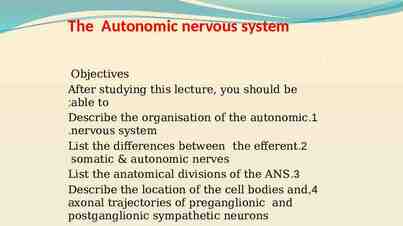Preparing for your performance appraisal: Tips for making the most of
23 Slides796.69 KB
Preparing for your performance appraisal: Tips for making the most of the annual appraisal meeting with your manager April 2019 8 0 DVV0 HGLFDO 6 FKRRO &RUH&RP SHW HQFLHV FFRXQW DELO LW \ ,QLW LDW LYH3 UREO HP6 RO YLQJ' HFLVLRQ0 DNLQJ 4 XDQW LW \ 4 XDO LW \ RI: RUN6 HUYLFH2 ULHQW DW LRQ/ HDGHUVKLS0 DQDJHPHQW ' LYHUVLW \ ,QFO XVLRQ
Learning Objectives Topics for today: Understand key elements of the new UMMS Performance Appraisal Policy & Process How to do background preparation for your review How to make the most of your review meeting Review of the new performance appraisal form for 2019 Position specific competencies Steps to take after the review Making the most of regular 1:1s throughout the year
Two core principles Performance planning and evaluation is a year round process. Planning for the following year begins with the current year’s appraisal process. This should be central topic in your regular 1:1s with your manager throughout the year. There shouldn’t be any surprises for either you or your manager in the annual performance appraisal meeting. Any issues of importance (e.g. progress toward goals, areas for improvement) should have been topics that were covered in prior 1:1 meetings.
The UMMS policy: Key points Employees will be evaluated at least twice during their first year of employment (at 6 months and at the regular annual review time) and at least annually thereafter. Self evaluation and customer feedback are important elements of the performance appraisal process. This will be covered in detail in following slides. The process begins with planning, which includes the development of a work plan outlining expectations and goals. Since projects and other needs change, performance planning is a continuous process with the plan being added to and/or revised throughout the year.
The UMMS policy: Key Points (Cont’d) A written development plan can be helpful to establish specific professional and personal goals during the year. There is space on the form to record this information or it can be included on a separate sheet. You should complete a self-appraisal prior to the formal appraisal meeting. This information is meant to supplement the supervisor’s observations. The Performance Appraisal is usually done in conjunction with developing the expectations, goals, and objectives for the following year.
Gather and review background information Last year’s performance appraisal document If not offered, ask for this year’s appraisal document in advance of the meeting Past project materials and other collateral documenting your successes Meeting minutes Positive e-mail messages from colleagues and customers Items from your calendar List of accomplishments from past year What you’ll need to be successful in the coming year 6
Do a self-evaluation Stick closely to covering last year’s goals and objectives Be honest – what would a neutral, outside observer say about you? Facts versus opinions Admit lessons learned and areas for improvement Suggest goals for the coming year Ask for resources (e.g., technology, professional development, training) that will help you be successful Include information about further career aspirations and how those might be reached (e.g., mentoring, job shadowing, further education) 7
Emphasize that you: Took on new responsibilities Produced exceptional results Learned and applied new skills Put in extra time or effort Started new projects Demonstrated leadership 8
Draft goals for the coming period S - specific, significant, stretching M - measurable, meaningful, motivational A - agreed upon, attainable, achievable, acceptable, action-oriented R - realistic, relevant, reasonable, rewarding, results-oriented T - time-based, time-bound, timely, tangible, trackable 9
Examples: Poor vs. SMART Objectives “Train the finance and administration department managers on effective performance appraisals.” “Prepare and deliver a performance appraisal training presentation focused on goal setting and effective delivery techniques for managers. Training effectiveness will be measured by average participant rating/survey scores of 4/5 (Very Good or Excellent) on a 5 point scale. Ensure all training requested by finance and administration department managers is delivered by the end of Q3, 2017.”
Go in with a positive, open-minded attitude Take notes Start with the positive Avoid defensiveness Ask questions Ask for examples Request an additional meeting/meetings if necessary Identify any next steps you and/or your supervisor will take as a result of your meeting 11
The Agenda for the Meeting with Your Manager Review of FY 19 performance objectives – operational, developmental, remedial Ratings on the UMMS competencies (6 1 model) Position specific competencies – expectations for FY ‘20 Identification of FY 20 performance objectives – operational, developmental, remedial
Format of a Competency Based Performance Appraisal Employee Information: UMMS Performance Appraisal Document FY2019 Employee Name: Manager Name: Department: SBU: Provide s supervision?: Management - I have direct reports Employee ID: Manage r Phone #: Title: Revie w Period (From ): Revie w Period (To ): Review of Current Year’s Objectives: PART I REVIEW OF CURRENT YEAR'S OBJECTIVES 0 Did not accomplish, 1 Partially accomplished, 2 Mostly accomplished, 3 Fully and successfully accomplished, 4 Outcome exceeded established objective, 5 Produced outstanding result Objective #1: Outcome and Measures Reviewer Objective #2: Outcome and Measures Reviewer Objective #3: Outcome and Measures Reviewer Objective #4: Outcome and Measures Reviewer Revie wer's average rating for objectives:
Rating Scale - Objectives 0 Did not accomplish 1 Partially accomplished 2 Mostly accomplished 3 Fully and successfully accomplished 4 Outcome exceeded established objective 5 Produced outstanding result
Format of a Competency Based Performance Appraisal (cont’d) Core Competencies Our competency model is a key element in helping us in defining, assessing, and promoting overall organizational success, reinforcing organizational culture, and shaping and encouraging employee performance. PROBLEM SOLVING/DECISION MAKING Reviewer's rating: Identifies and analyzes problems weighing the relevance and accuracy of available information and recognizing one's filters, privileges, biases, and cultural preferences Generates and evaluates alternative solutions and makes effective and timely decisions Reviews the effects and implications of decisions and takes appropriate follow up actions Support for rating: Reviewer
Rating Scale - Competencies 0 Does Not Meet 1 Needs Improvement 2 Mostly Meets 3 Meets Expectations 4 Exceeds Expectations 5 Outstanding
Exercise Using the core competency Accountability create an example of a behavior that would be associated with each level of performance Level Example Does Not Meet Needs Improvement Mostly Meets Meets Expectations Exceeds Expectations Outstanding
Performance Summary Performance Summary: Populated automatically from reviewer input in prior sections.
Annual Performance Objectives Annual Performance Objectives: Specifies the goals/objectives for the upcoming fiscal year. PART III. ANNUAL PERFORMANCE OBJECTIVES (for upcoming fiscal year) Objective #1: Measure/Timetable: Objective #2: Measure/Timetable: Objective #3: Measure/Timetable:
Compliance Statement, Comments and Signatures
Performance Appraisal Form: Buttons Submit Form Print Form Save Form Check Spelling
Next steps 1. Review the performance appraisal document 2. Identify any areas where you have questions or need further clarification 3. Make sure you understand any areas identified as needing improvement and how you will make those improvements 4. Develop an action plan for how you will approach goals and areas for improvement 5. Include a progress report in your regular 1:1 meetings with your supervisor 22
Thank You




























